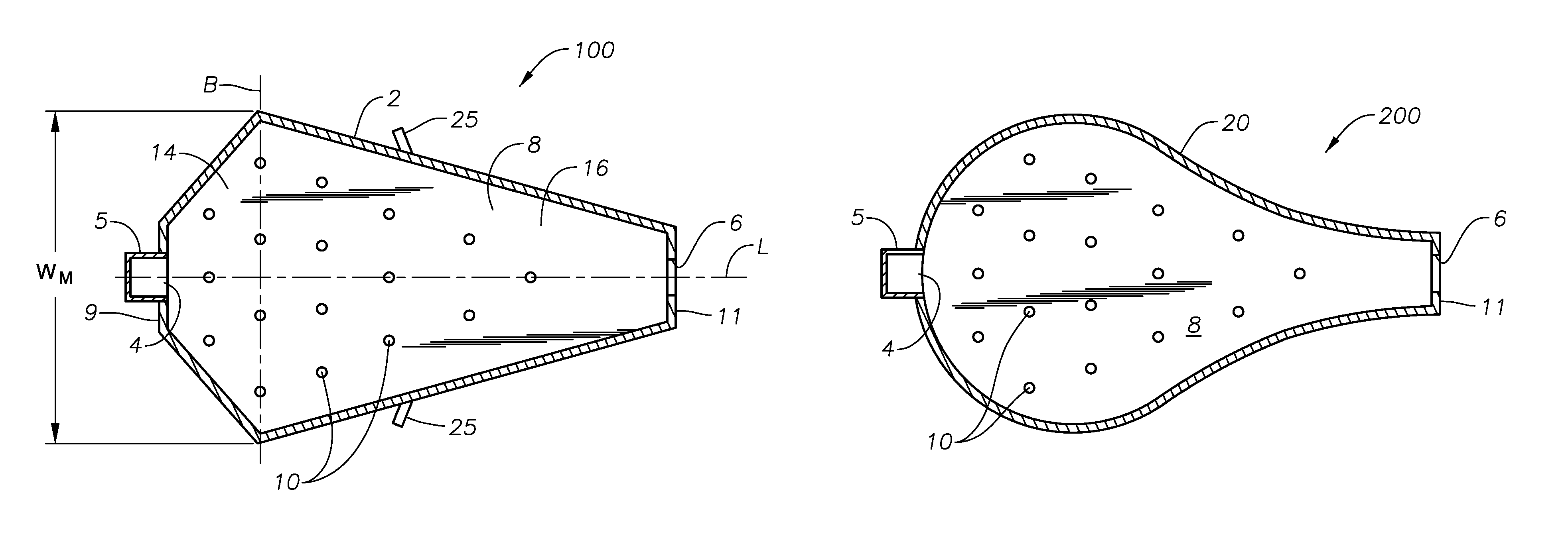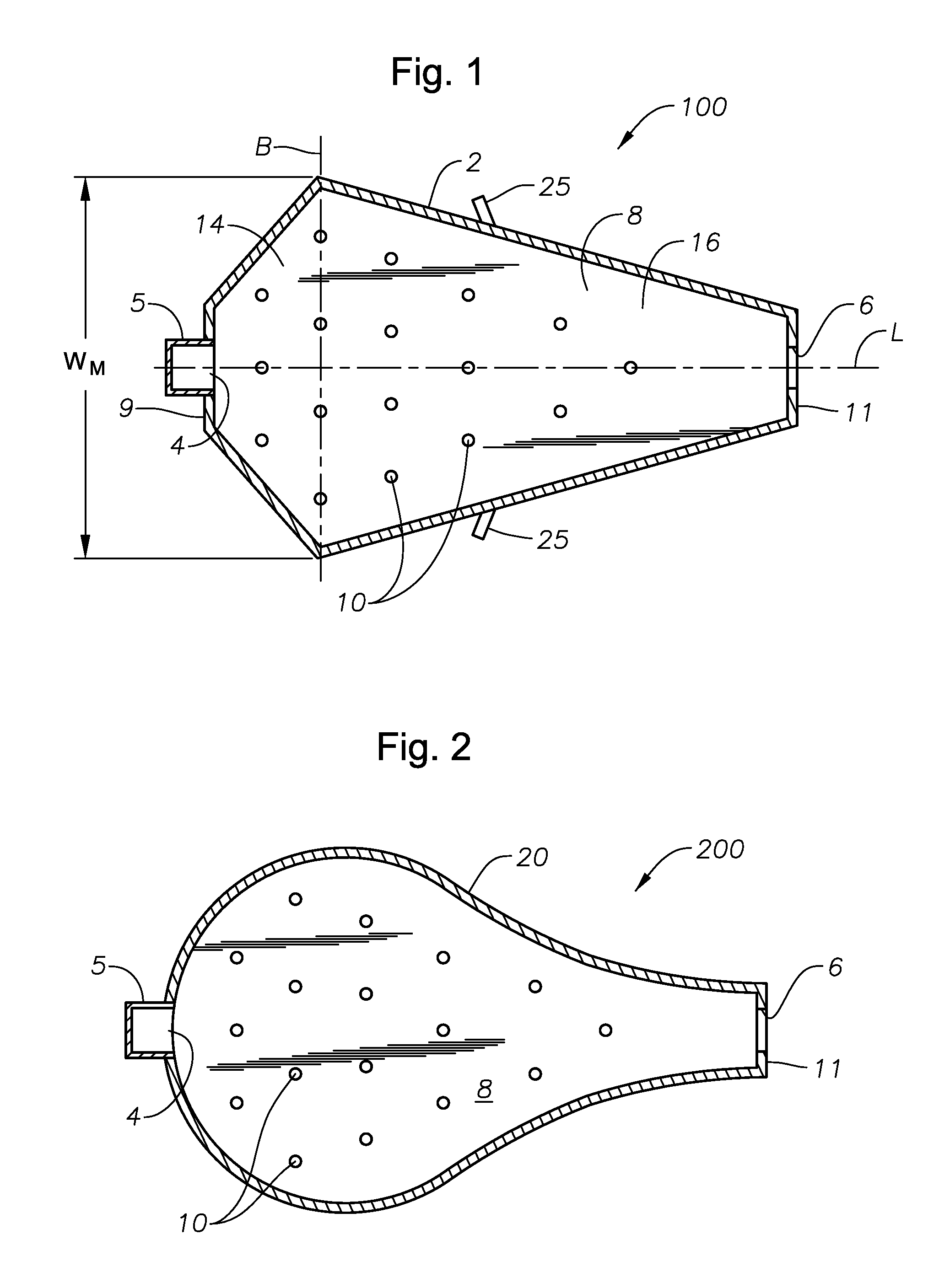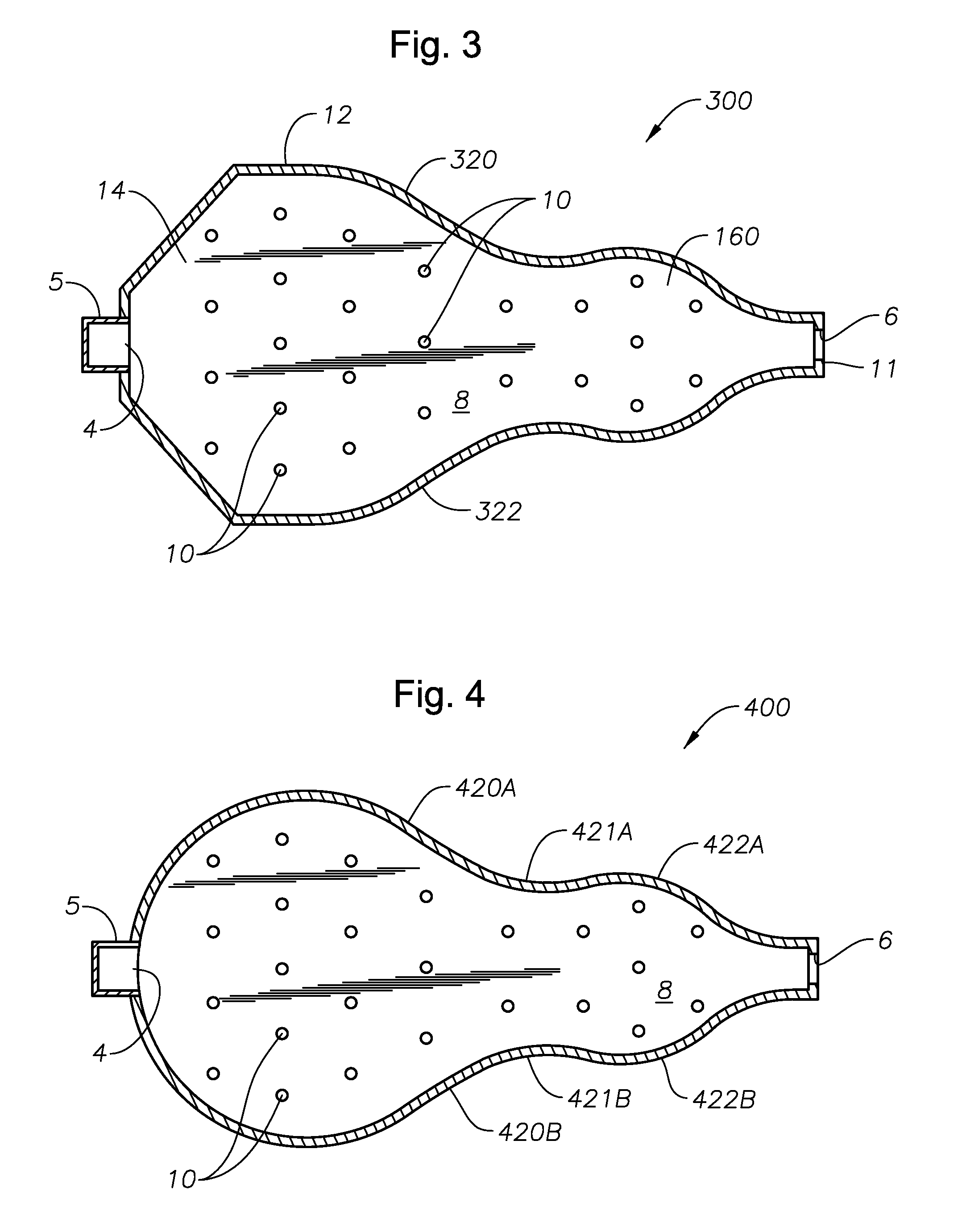Panel-cooled submerged combustion melter geometry and methods of making molten glass
a technology of submerged combustion melters and melters, which is applied in the direction of combustion types, furnaces, lighting and heating apparatuses, etc., can solve the problems of increasing energy costs, significant dead (low flow or stagnant) regions, and not alleviating dead flow regions by using submerged combustion burners, etc., to reduce dead flow (stagnant) regions, reduce or high quality
- Summary
- Abstract
- Description
- Claims
- Application Information
AI Technical Summary
Benefits of technology
Problems solved by technology
Method used
Image
Examples
Embodiment Construction
[0038]In the following description, numerous details are set forth to provide an understanding of various melter apparatus and process embodiments in accordance with the present disclosure. However, it will be understood by those skilled in the art that the melter apparatus and processes of using same may be practiced without these details and that numerous variations or modifications from the described embodiments may be possible which are nevertheless considered within the appended claims.
[0039]Referring now to the figures, FIGS. 1-5 are plan views, with parts broken away, of five melter embodiments in accordance with the present disclosure. FIG. 6 is a side cross-sectional view of the melter apparatus illustrated in FIG. 1. The same numerals are used for the same or similar features in the various figures. In the plan views illustrated in FIGS. 1-5, it will be understood in each case that the roof and exhaust chimney are not illustrated in order to illustrate more clearly the key...
PUM
| Property | Measurement | Unit |
|---|---|---|
| hr | aaaaa | aaaaa |
| hr | aaaaa | aaaaa |
| pressure | aaaaa | aaaaa |
Abstract
Description
Claims
Application Information
 Login to View More
Login to View More - R&D
- Intellectual Property
- Life Sciences
- Materials
- Tech Scout
- Unparalleled Data Quality
- Higher Quality Content
- 60% Fewer Hallucinations
Browse by: Latest US Patents, China's latest patents, Technical Efficacy Thesaurus, Application Domain, Technology Topic, Popular Technical Reports.
© 2025 PatSnap. All rights reserved.Legal|Privacy policy|Modern Slavery Act Transparency Statement|Sitemap|About US| Contact US: help@patsnap.com



